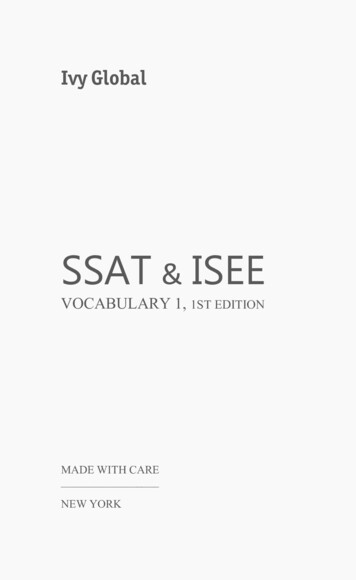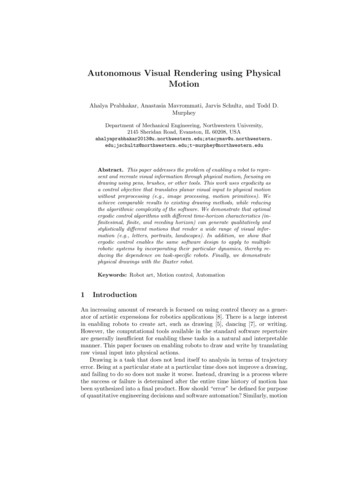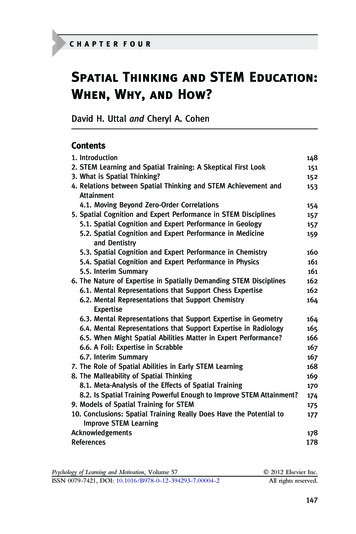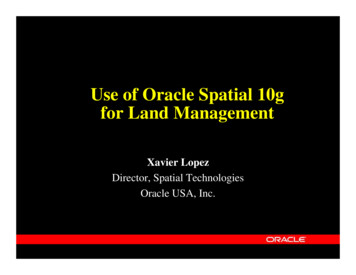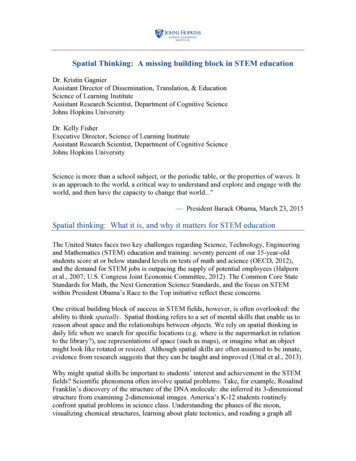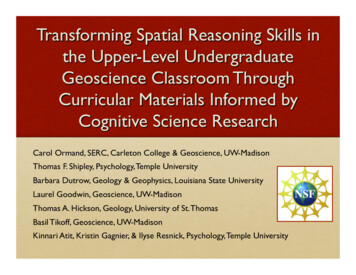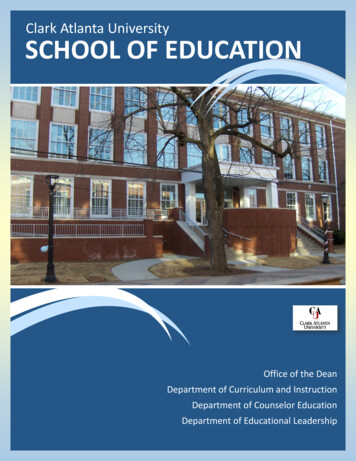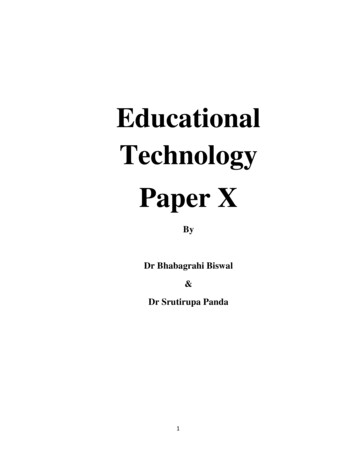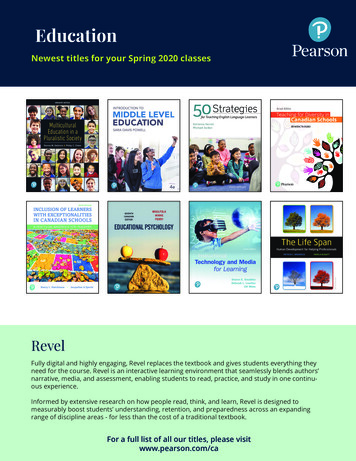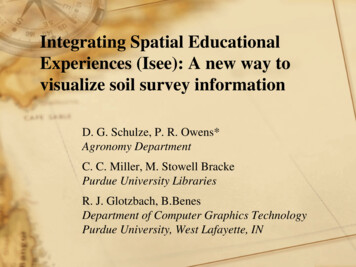
Transcription
Integrating Spatial EducationalExperiences (Isee): A new way tovisualize soil survey informationD. G. Schulze, P. R. Owens*Agronomy DepartmentC. C. Miller, M. Stowell BrackePurdue University LibrariesR. J. Glotzbach, B.BenesDepartment of Computer Graphics TechnologyPurdue University, West Lafayette, IN
Additional Contributors Travis Neely, Mike Wiggington, Rick Nielson, and othersNatural Resources Conservation Service, Indianapolis, IN
Background Many concepts in our soil, crop, andenvironmental sciences courses areintrinsically spatial soils vary spatially across landscapes crops, cropping systems change with soils environmental issues impact watersheds
Background National Research Council (2006) Learning to Think Spatially: GIS as aSupport System in the K-12 Curriculum Beyond Mapping: Meeting National NeedsThrough Enhanced Geographic InformationScience
Background Our students need geospatial skills need to think spatially conceptualize problems in their geospatial context Currently usingmobile GIS toteach soil sciencein the field
Integrating Spatial EducationalExperiences (Isee) into Crop, Soil, andEnvironmental Science Curricula USDA – Higher Education Challenge Grant Goals - develop our students’ ability: to use geospatial information to understand how andwhy soils and landscapes vary spatially at variousscales to understand how the spatial distribution of soilsand landscapes impacts the distributions of crops,cropping systems, land use, and environmental andnatural resource issues across Indiana
Integrating Spatial EducationalExperiences (Isee) into Crop, Soil, andEnvironmental Science Curricula Tasks Develop the Integrating Spatial EducationalExperiences (Isee) Web Application Integrate Spatial Educational Experiences into ourCurricula
Primary Data Sets for Indiana Indiana 2005 Digital Elevation Model Indiana Spatial Data Portal 1.5 x 1.5 m, down-sampled to 5 x 5 m hillshade & transparent color ramp SSURGO Soils NRCS Soil Data Mart detailed, 2nd order soil survey covers almost all of agricultural areas of U.S. soil parent material, loess thickness, drainageclass Other maps roads, towns, aerial photography, etc.
Soil Maps Dominant Soil Parent Material based on soil series description generally deepest material, or mostunique material in profile Loess Depth thickness of wind-blown silt Soil Drainage Class presence of a seasonal high water table Additional thematic maps to be developed
Software Google Earth API Application Programming Interface Web browser plugin Fast, easy to navigate Use Google imagery, roads, politicalboundaries, etc. Use our own soils and interpretativelayers
Digital Delivery of Soil Information Soil survey information can beviewed in many ways to manyaudiences There is a need to develop newinexpensive, fast and easy deliveryoptions
“ a bird’s eye viewwith x-ray vision ”
Learning to Think Spatially: GIS as a . Our students need geospatial skills . need to think spatially conceptualize problems in their geospatial context Currently using mobile GIS to teach soil science in the fie
